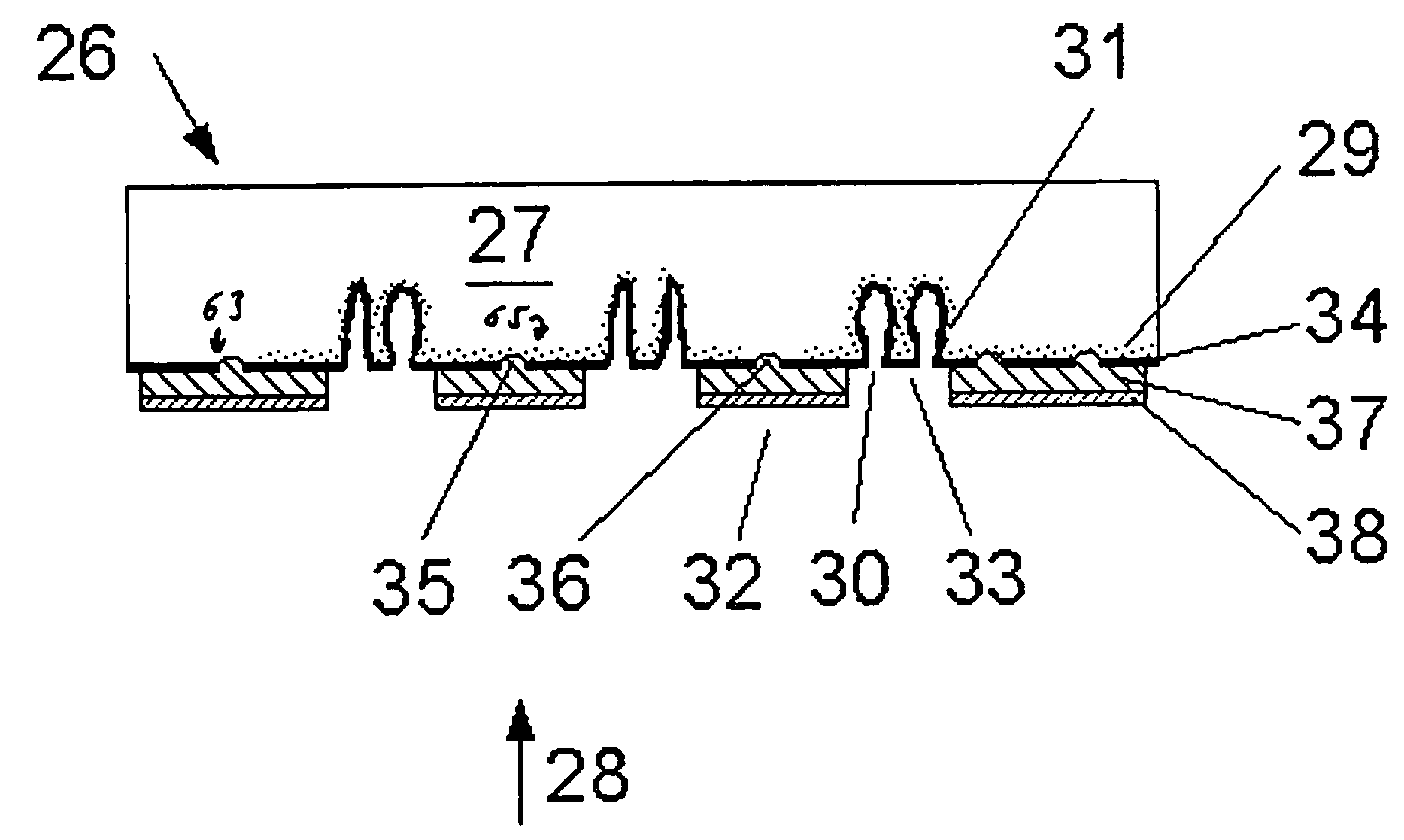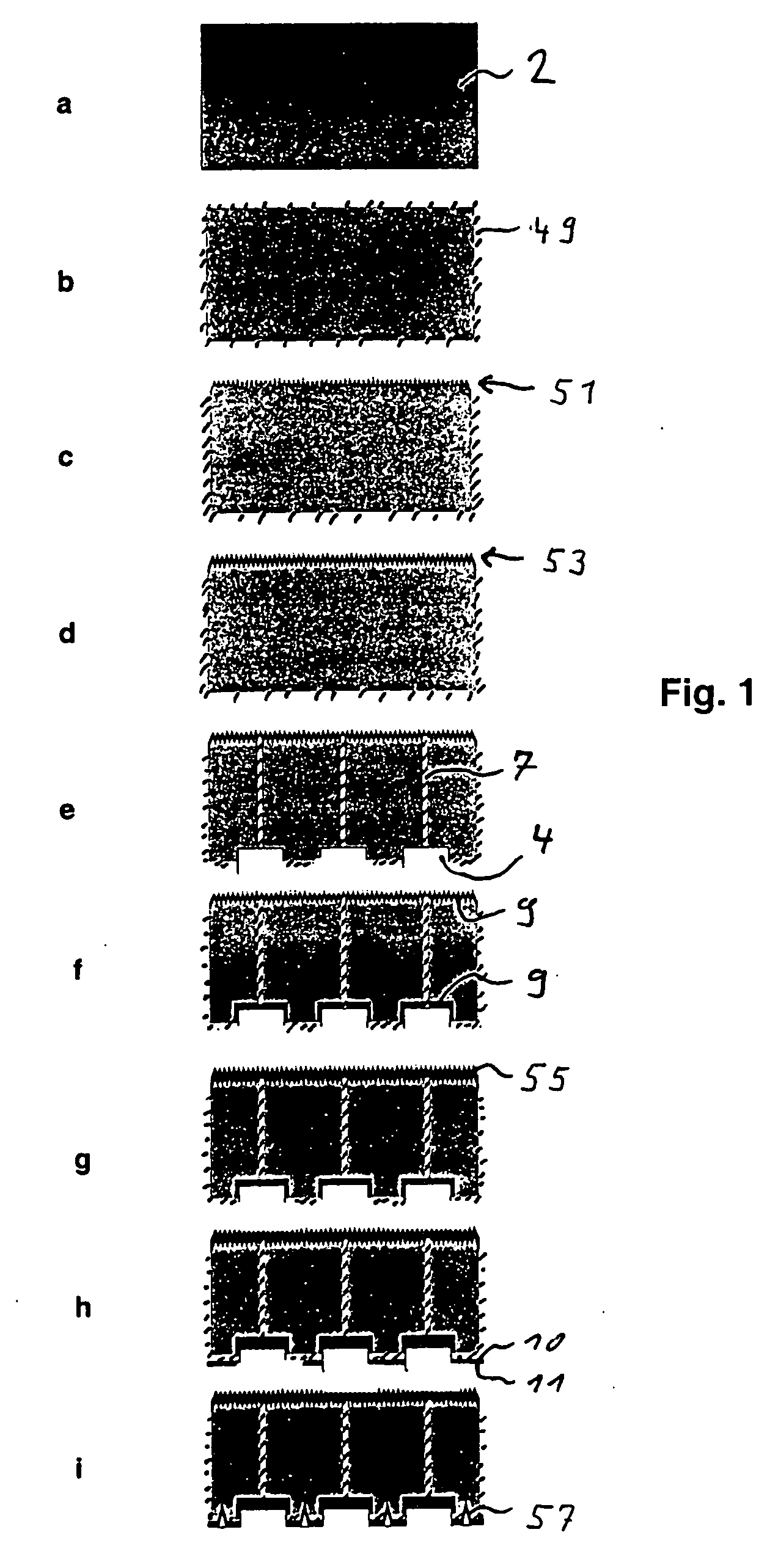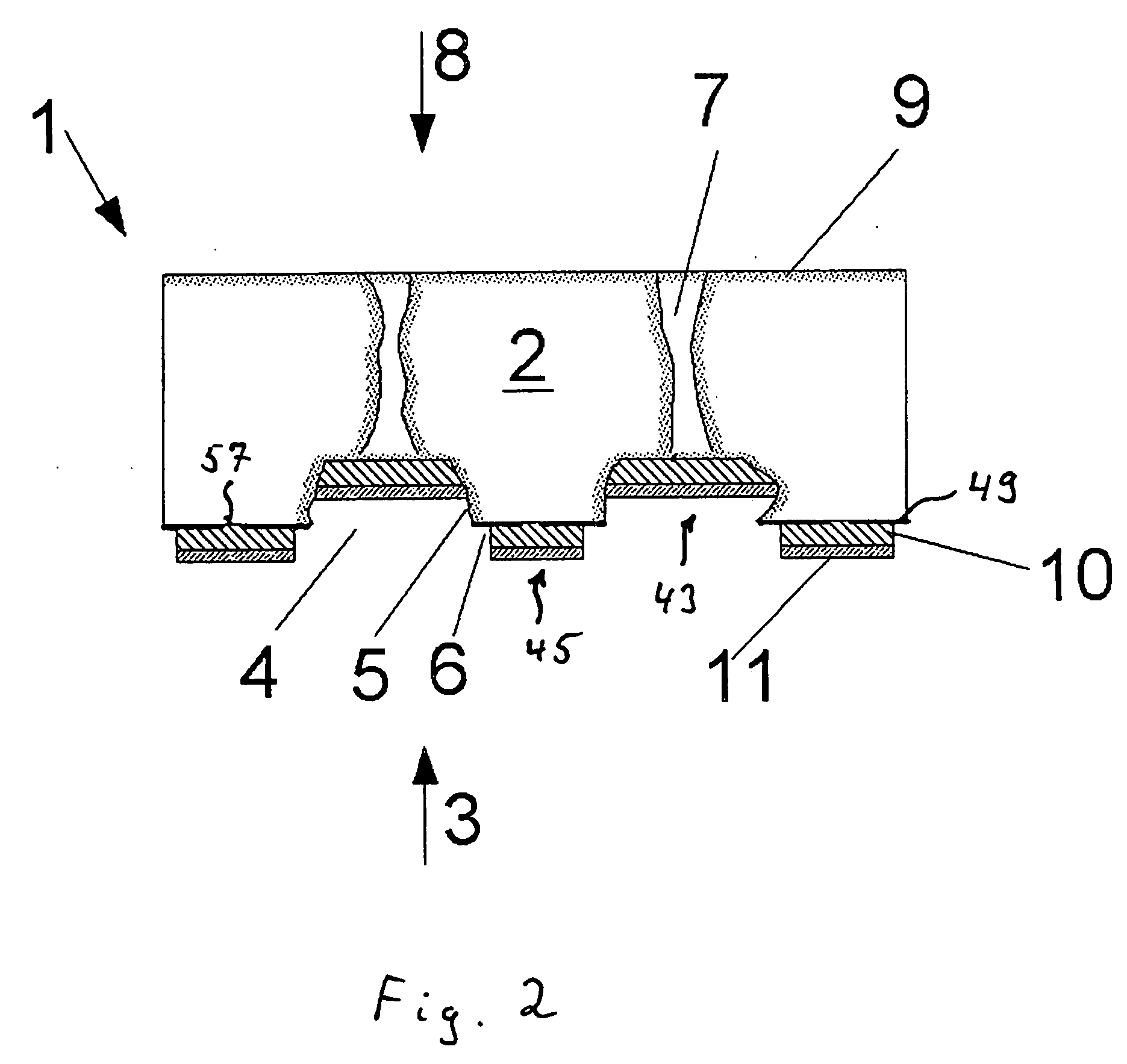Rear contact solar cell and method for making same
- Summary
- Abstract
- Description
- Claims
- Application Information
AI Technical Summary
Benefits of technology
Problems solved by technology
Method used
Image
Examples
first embodiment
[0041]FIG. 2 diagrammatically shows a section view of a solar cell according to the invention according to a
second embodiment
[0042]FIG. 3 diagrammatically shows a section view of a solar cell according to the invention according to a
third embodiment
[0043]FIG. 4 diagrammatically shows a section view of a solar cell according to the invention according to a
DESCRIPTION OF PREFERRED EXEMPLARY EMBODIMENTS
[0044]With reference to FIG. 1, first an embodiment of a production method according to the invention is described, as can be applied in a similar way in the production of the solar cell 1 according to the invention, which solar cell is shown in FIG. 2.
[0045]First (in step a) a silicon wafer 2 is subjected to tenside cleaning in a heated ultrasonic bath. Subsequently, the damage caused during sawing of the wafer is edged off in heated KOH, wherein approximately the outermost 10 μm of the wafer is removed. Subsequently, the wafer is subjected to so-called RCA cleaning, wherein the wafer surface is oxidised by a sequence of NH4OH-, HF-, HCl- and HF-rinses, with the oxide subsequently being etched off.
[0046]Next (in step b) the entire wafer surface is oxidised in an N2 / O2 atmosphere at approximately 1050° C. to an oxide thickness of a...
PUM
 Login to View More
Login to View More Abstract
Description
Claims
Application Information
 Login to View More
Login to View More - R&D
- Intellectual Property
- Life Sciences
- Materials
- Tech Scout
- Unparalleled Data Quality
- Higher Quality Content
- 60% Fewer Hallucinations
Browse by: Latest US Patents, China's latest patents, Technical Efficacy Thesaurus, Application Domain, Technology Topic, Popular Technical Reports.
© 2025 PatSnap. All rights reserved.Legal|Privacy policy|Modern Slavery Act Transparency Statement|Sitemap|About US| Contact US: help@patsnap.com



